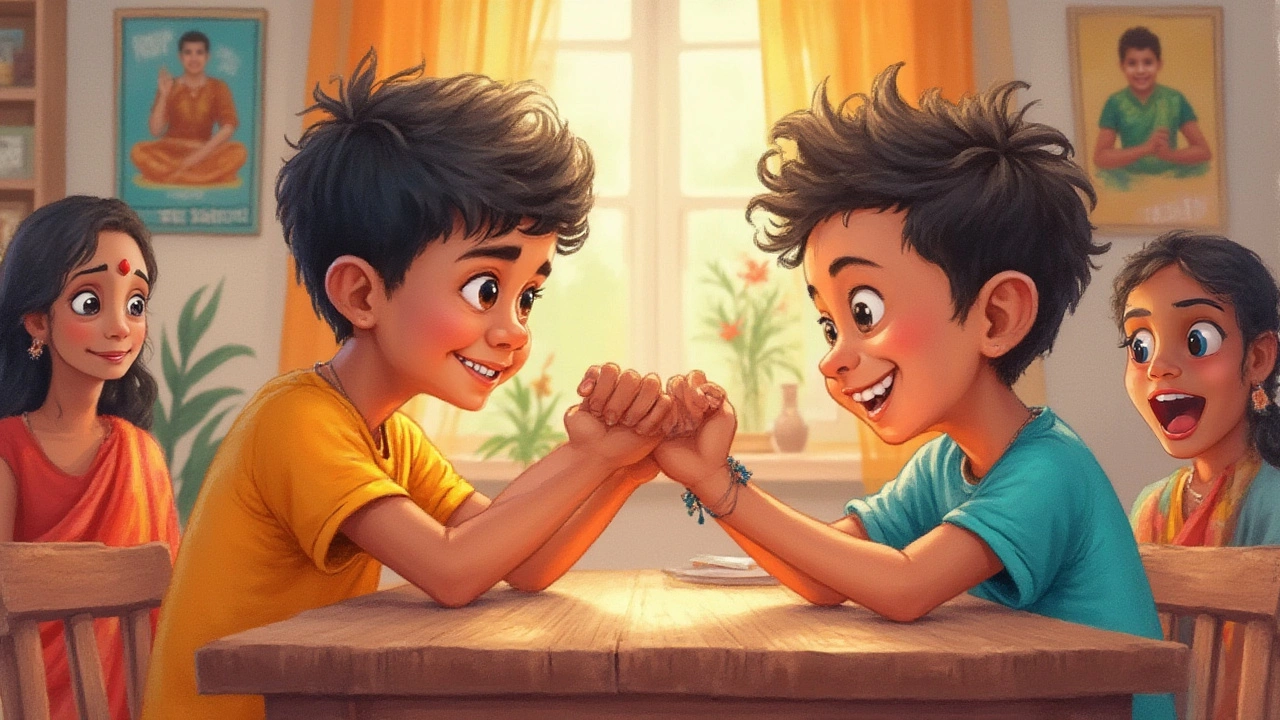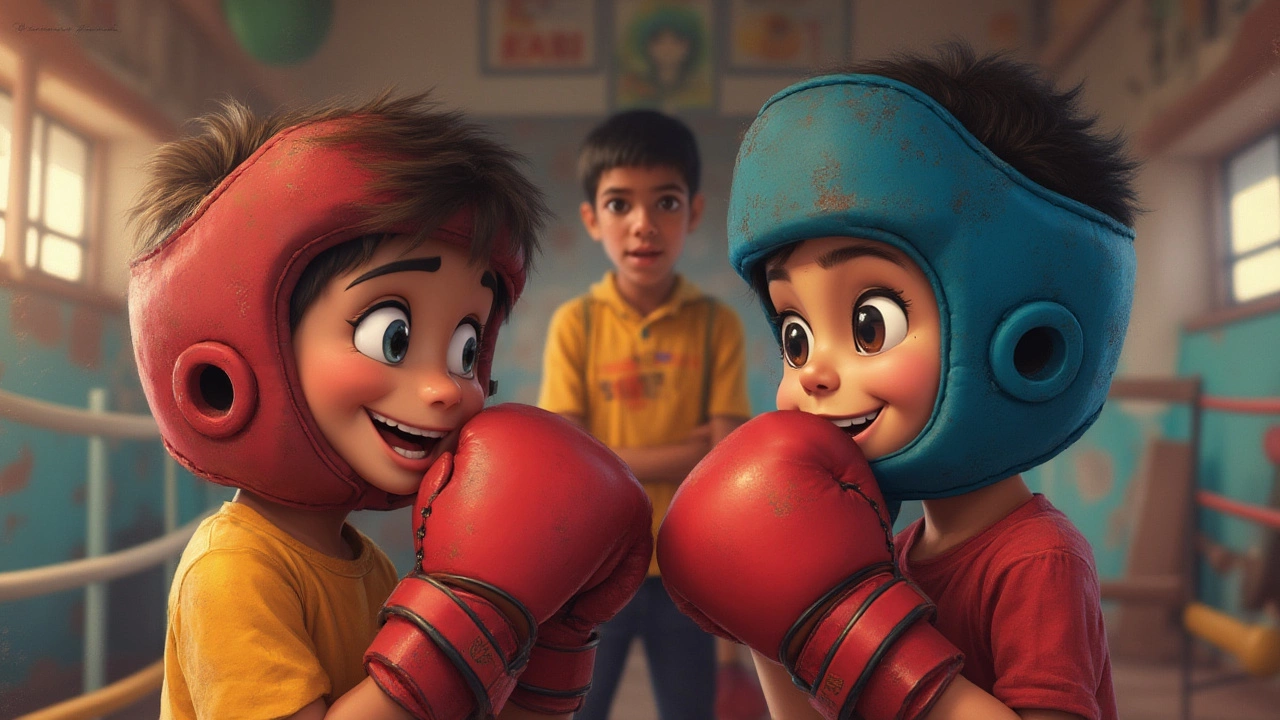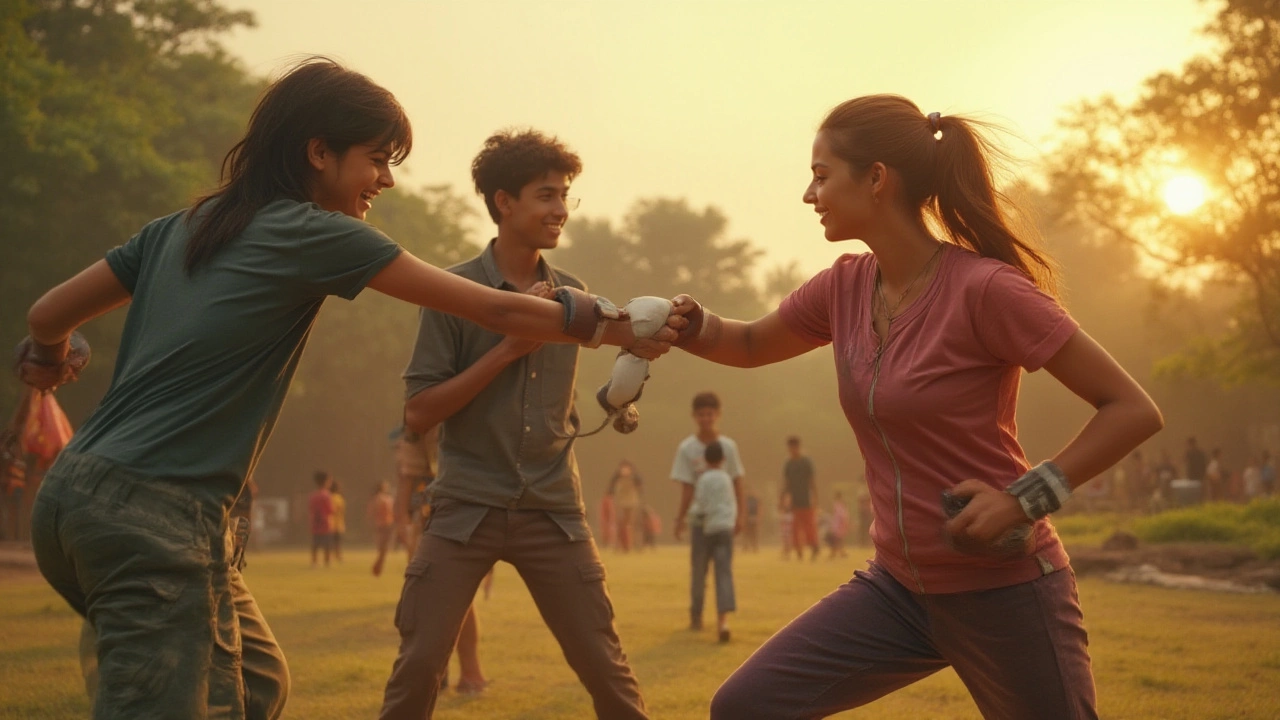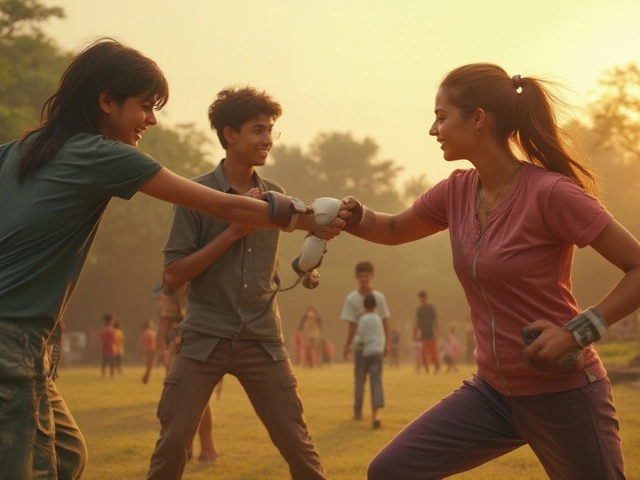Picture this: two friends, sweat on their brows, laughter echoing off the gym walls as they toss playful jabs in a ring or mess around on a grassy field. There’s rivalry—sure. But there’s no bad blood, no intent to really harm. This is how people bonded long before video games or competitive esports: a playful scrap, a "friendly fight." But what’s it actually called? Is there a proper name for that kind of playful physical contest, the kind where grins slip in between mock punches and high fives replace handshakes over bruised egos? Dig in, because what sounds simple runs deeper than you think.
Understanding the Meaning of a Friendly Fight
So what do you call a fight where no one really wants to hurt anyone? The main terms that pop up are sparring, playfighting, and sometimes even scrimmaging, depending on the sport. The phrase ‘friendly fight’ covers any non-hostile, non-competitive bout where the point isn’t to dominate—it’s to practice, learn, or just have fun. You’ve probably done it as a kid, wrestling in the backyard or testing how hard you could hit your big brother before he noticed. Sparring is the term used in boxing, martial arts, and other combat sports. Playfighting is what children or even pets do, tumbling around without any mean intentions. In rugby or football, people might call it a scrimmage if it’s a practice game without the pressure of trophies or medals.
Culturally, humans have always engaged in rough-and-tumble play. This isn’t just a warm-up for violence—it’s actually social, a way to learn self-control, boundaries, and respect for others. Think of ancient Greek wrestling, medieval practice duels, or even the roots of capoeira in Brazil, where practice fighting mixed with dance to keep it friendly. Even animals do it—lion cubs, puppies, and chimps playfight all the time to build skills and test limits. In human settings, parents, coaches, and gym teachers often encourage light sparring or playfighting to help kids develop confidence and resilience. That’s why you’ll see programs teaching wrestling basics or boxing techniques without letting kids go full force—they know it’s not just about winning; it’s about learning how to lose, too.
Some people worry that friendly fights always risk crossing the line into real hostility. It’s a legit concern, and that’s why good supervision, clear rules, and trust are key. In martial arts, for example, dojos set etiquette for sparring—bow, check in with your partner, keep your hits in check, wear headgear. Olympic boxing rules set separate categories for practice fights, especially for youth or amateur fighters. Even video game tournaments have a "friendly match" mode, minus the leaderboard stress. The idea isn’t to avoid competition, but to make sure the stakes are low, the mood is light, and everyone walks away as friends.
Different Names Across Sports and Cultures
The label for a friendly fight depends on the setting. In boxing and martial arts, sparring means a controlled, non-hostile match where athletes focus on technique, speed, defense, and strategy—not on knocking someone out. Kickboxing gyms advertise "light sparring" or "technical sparring," while MMA clubs often offer partner drills with minimal contact. The term sparring pops up across karate, taekwondo, judo, and even fencing. Some styles use their own phrases—like randori in judo, which means ‘free practice,’ or kumite in karate. All share the concept: skilled fighters testing each other without crossing into aggression.
Sports outside combat have their own terms. In rugby and American football, a friendly fight might be a "scrimmage" or a "friendly match." These aren’t just drills—they’re full games, but taken less seriously. Soccer clubs organize "friendlies," practicing tactics, fitness, and teamwork without worrying about championship points. Basketball and tennis use “pickup games” or “practice matches” for informal play. The idea: compete, sure—but stay cool, learn, and connect.
Kids usually call it playfighting. It’s how they learn boundaries and body control. Dogs do it too, wrestling with soft bites and flopping over as a sign of trust. In playgrounds worldwide, you’ll hear “just for fun,” “no hurting,” or “play battle” as kids set up their own ground rules. Even adults get in on this with mock sword fighting at Renaissance fairs or LARP (Live Action Role-Playing) events. Terminology shifts with age, culture, and intensity, but the heart of it is always the same: it’s all in good fun.
Across the globe, different cultures add their own flavor. In India, kushti wrestlers warm up with friendly matches in the akhara (wrestling pit) to build camaraderie before big bouts. Japanese sumo wrestlers do practice shiko (training matches) that are all about testing skill, not showing dominance. In Brazil, capoeira circles blur the lines even further—music, acrobatics, and playfighting all blend into a lively contest that’s part dance, part duel, all friendly.

Health Benefits and Social Perks
At a glance, tossing punches (even gently) or rolling on the floor looks like just a way to burn off steam. But playfighting packs real benefits both for your body and your social life. The obvious one: fitness. Sparring raises your heart rate, builds coordination, boosts agility, and sharpens reflexes. In martial arts, light sparring helps with muscle tone, stamina, and flexibility. Kids who playfight regularly develop better balance, faster reaction times, and improved spatial awareness, as proven by a University of Montreal study back in 2017 comparing active and non-active children.
Mentally, there’s a lot under the hood. People learn emotional control during friendly fights; if things heat up, you have to self-regulate, apologize, cool off. This is a golden skill that translates everywhere in life—negotiating, managing conflict, building patience. Friendly fights can break the ice in a new group, sparking laughter before competitiveness emerges. On teams, scrimmages build trust and communication because winning isn’t everything—understanding your partner’s signals is. That’s the kind of muscle you can only build under low-stakes pressure.
Psychologists say playfighting gives a safe place to test aggression and resolve misunderstandings, as shown in research by Dr. Sergio Pellis at the University of Lethbridge. Repeated friendly fights lead to stronger friendships, higher group morale, and deeper happiness both for kids and adults. Even if you’re shy, tossing a ball or engaging in a gentle wrestling match can make you feel included. There’s stress relief, too—the mix of movement and laughter triggers endorphins, the body’s natural mood boosters.
Here’s a look at some quick stats and facts about friendly fights and their benefits in a simple table:
| Type | Physical Benefits | Mental Benefits | Popular Age Group |
|---|---|---|---|
| Sparring (Boxing/Martial Arts) | Cardio, strength, balance | Focus, discipline, self-control | Teens/adults |
| Playfighting (Kids/Dogs) | Growth, agility | Social bonding, boundary-setting | Kids, young animals |
| Scrimmage (Team Sports) | Team coordination, fitness | Communication, empathy | All ages |
| LARP/Mock Combat | Stamina, reflexes | Imagination, camaraderie | Adults/teens |
How to Keep a Friendly Fight Safe and Fun
Sure, a little roughhousing can be healthy, but it doesn’t take much for things to go sideways. The single smartest move: set some ground rules before you start. If you’re sparring in a gym, make sure to wear mouthguards, headgear, and gloves. Never go for full force—start slow and check in with your partner if you’re unsure. Most boxing clubs use a code of conduct: respect the tap-out, keep your fists controlled, and know that stopping the match isn’t losing face; it’s just good sportsmanship. Martial arts dojos have referees or instructors to monitor the action and step in if things heat up. Don’t just wing it—ask your coach or buddy what’s cool and what’s not.
For parents: teach your kids how to say stop, how to apologize for getting carried away, and to always check that everyone’s smiling. Turns out, most mishaps in playfighting happen when someone ignores a "that’s enough." In a playground or at home, stick to safe surfaces—carpets, grass, padded mats. No shoes. No sharp objects nearby (obviously). If wrestling, skip headlocks and neck twists—shoulders and arms are way safer zones to grapple. Always watch out for fatigue; tired people make clumsy moves, and that’s when bumps happen.
If you’re going for a friendly match in soccer, rugby, or basketball, sort your teams so everyone gets a turn and avoid mismatches in size or skill. Use gear like shin pads and mouthguards, especially if there’s a risk of collision. Friendly matches don't need referees shouting fouls every five minutes, but it helps to have someone keeping an eye on fair play. Some teams use safe words: if someone yells “pause” or “timeout,” drop the pace instantly. Everyone needs to trust they won’t get hurt or embarrassed—that’s the backbone of a good friendly fight.
- Check equipment before play
- Set clear rules for physical contact
- Agree on what’s "too rough" and what’s playful
- Keep it short—end on a high note, not out of exhaustion
- Always cool down, stretch, and talk through anything that felt off
Treat friendly fights as the trust-building, skill-sharpening events they are, instead of ego contests. If it stops being fun for anyone, drop it—no shame in stepping out. A good friendly spar or playfight leaves everyone smiling and maybe even a little better for the next round.

Famous Examples and Stories of Friendly Fights
History and pop culture love a friendly fight story. Muhammad Ali famously sparred with kids and fellow pros alike, keeping things goofy with his signature shuffles and gentle taps. When pro boxers train for a big match, they’ll run dozens—even hundreds—of rounds of light sparring, focusing on technique instead of intensity. Mike Tyson used to say his best learning came during friendly spars, not knockouts. Even in movies, you’ll see friendly fight scenes: think Rocky and Apollo at the end of "Rocky III" or Kung Fu Panda’s mentor-student training duels—these stick because the tension always ends in a hug, not hurt feelings.
Sports have their annual friendlies too. Top soccer clubs like Real Madrid or Manchester United warm up their season with exhibition games. No points, just pure practice and entertainment. Fans see it as a time for wild tricks, new strategies, and a little showboating—with zero risk to the league record. Rugby has "warm-up matches" that mix veterans and rookies, helping new players get a taste for big games without the intimidating stakes. It’s these low-key clashes that build locker room legends and secure a team’s chemistry.
Outside pro sports, you might spot celebrity charity matches—boxers facing comedians, tennis stars against famous actors—where fun rules the day and everyone goes home with a bruised ego, at worst. Then there’s backyard brawls at family gatherings or school playfights remembered for years because someone accidentally broke a lamp (or grandma’s vase). Some of world history’s greatest partnerships started on opposite sides of a practice fight, only to blend respect with rivalry for life.
- Ali vs. Frazier: off-the-record sparring sessions that taught both new tricks
- John Lennon and Paul McCartney’s music "duels," which shaped The Beatles
- The famous “Queen’s Rules” London boxing bouts—agreed boundaries, mutual respect
- Jason and Grant’s annual wrestling match at MIT, where opponents stayed best friends
These stories remind us that, deep down, a friendly fight isn’t about winning or losing. It’s about bonding, learning, and having a good time together. As long as everyone trusts each other and knows the boundaries, friendly fights can be some of the most memorable and meaningful moments in sport, at home, or anywhere in between.

